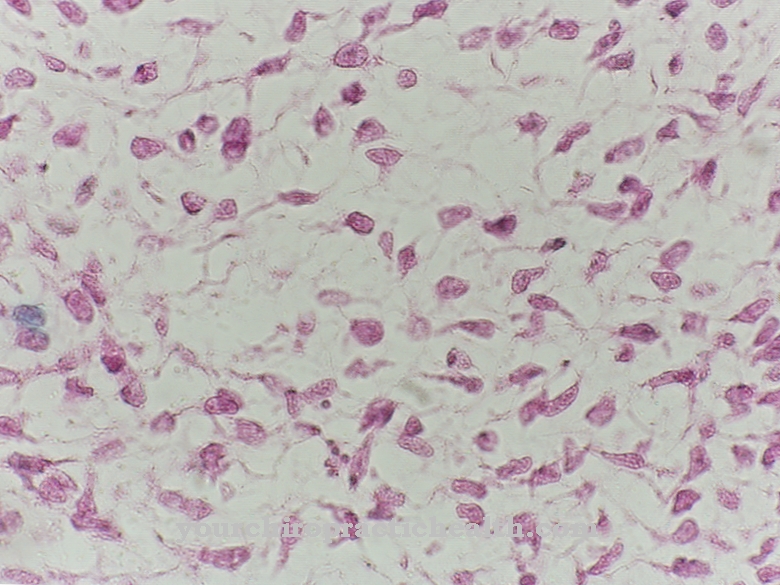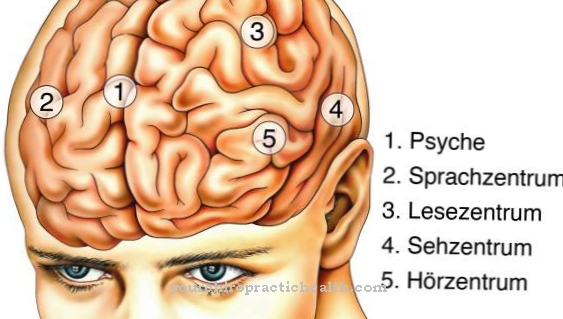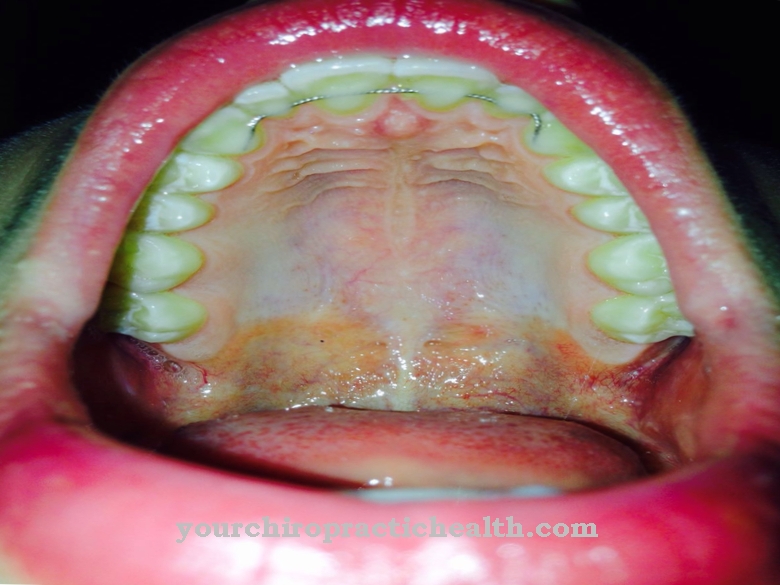The Collarbone is a comparatively thin bone of the shoulder girdle, which is extremely prone to fractures due to its exposed position directly under the skin. Clavicle fractures represent the most common bone fractures at 10 to 15 percent.
What is the collarbone?
As Collarbone (clavicle) is a slightly S-shaped curved bone, which is placed on both sides and belongs to the shoulder girdle next to the two scapulae (shoulder blades).
The clavicle articulately connects the sternum (breastbone) with the acromion (shoulder roof, shoulder height), a component of the scapula. Together with the sternum, the clavicle forms the medial sternoclavicular joint (collarbone-breastbone joint), while the acromioclavicular joint (shoulder joint) is formed laterally with the acromion.
Because the collarbone is located beneath the skin, the bone is often affected by fractures.
Anatomy & structure
The human Collarbone is an approximately 12 to 15 cm long bone that is bent or curved in an S-shape. The clavicle is divided into three sections.
The extremitas sternalis is the end section facing the sternum, which has a round joint surface (facies articularis sternalis) and is counted as part of the sternoclavicular joint. The end piece facing the acromion is called the extremitas acromialis and forms the acromioclavicular joint with the acromion. The articular surface of the extremitas acromialis, the so-called facies articularis acromialis, has a saddle-shaped flattening.
The middle piece between these two end pieces is called the corpus claviculae and can be divided into a lateral third and two medial thirds.The fibers of the muscle deltoideus (deltoid muscle) radiate anteriorly into the lateral third and those of the musculus trapezius (trapezius muscle) radiate into the lateral third. Inferiorly, the conoideum ligament, which belongs to the acromioclavicular joint, attach to the conoideum tubercle (bone protrusion) and the trapezoidal ligamentum to the trapezoidal line.
The two medial thirds of the collarbone have the three edges Margo anterior, Margo posterior and Margo superior and the three surfaces Facies anterior, Facies posterior and Facies inferior.
Functions & tasks
The Collarbone is connected medially to the sternum via the sternoclavicular joint and laterally to the scapula via the acromioclavicular joint. Accordingly, the clavicle plays an important role in the mobility and stability of the shoulder joint.
In particular for the lateral elevation (lifting movement) of the arm above the horizontal, it is necessary to carry the two named joints. Although the sternoclavicular joint is located comparatively far from the shoulder joint, it participates decisively in the shoulder joint movement. The collarbone also functions as a starting point for various muscles such as the sternocleidomastoid muscle (towards the sternum) and deltoideus muscle (towards the acromion) as well as for different ligaments (including the coracoclavicular ligament, conoid ligament).
For example, the coracoclavicular ligament stabilizes the acromioclavicular joint and prevents the outer end of the clavicle from sliding away from the top. The costoclavicular ligament on the inferior facies of the two medial thirds also stabilizes the sternoclavicular joint and fixes the collarbone to the thorax. The deltoid muscle, which attaches to the lateral third of the collarbone, participates in abduction (spreading), anteversion (movement in an anterior direction) and retroversion (bending in a dorsal direction) of the arm.
The trapezius muscle, which is attached to the same third of the clavicle, is involved in the lifting movements of the arms and stabilizes the shoulder when it is subjected to greater stress such as carrying heavy loads.
Illnesses, ailments & disorders
The Collarbone can be felt in its entire course directly under the skin and is therefore extremely exposed and prone to fractures. Collarbone fractures are the most common disease of the clavicle, accounting for 10 to 15 percent of the total number of bone fractures, with the outermost third being affected in the majority of cases.
Direct violence as a result of a bicycle fall, riding accident or other trauma during sporting activities often leads to a clavicle fracture. In rare cases, falling on the outstretched arm can indirectly lead to a fracture of the collarbone. A dislocation or dislocation of the acromioclavicular joint (ACG dislocation) is also a common injury to the collarbone. Here, an accident-related rupture (tearing) in the stabilizing ligament and capsular apparatus of the acromioclavicular joint leads to a lifting of the outer end of the clavicle via the muscle pull.
A palpable step forms subcutaneously between the end of the clavicle and the acromion. Applying pressure to this level can trigger the piano key phenomenon characteristic of ligament ruptures. A dislocation of the sternoclavicular joint, on the other hand, is rare and can usually be treated conservatively.
Age-related degeneration of the acromioclavicular joint can cause arthritic changes with spurs. Spurs restrict shoulder joint mobility and not infrequently lead to shoulder bottleneck or impingement syndrome.



























